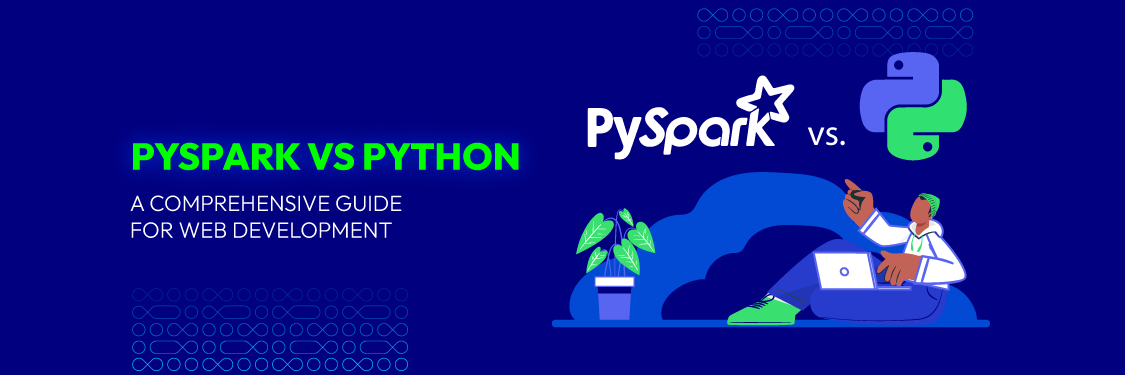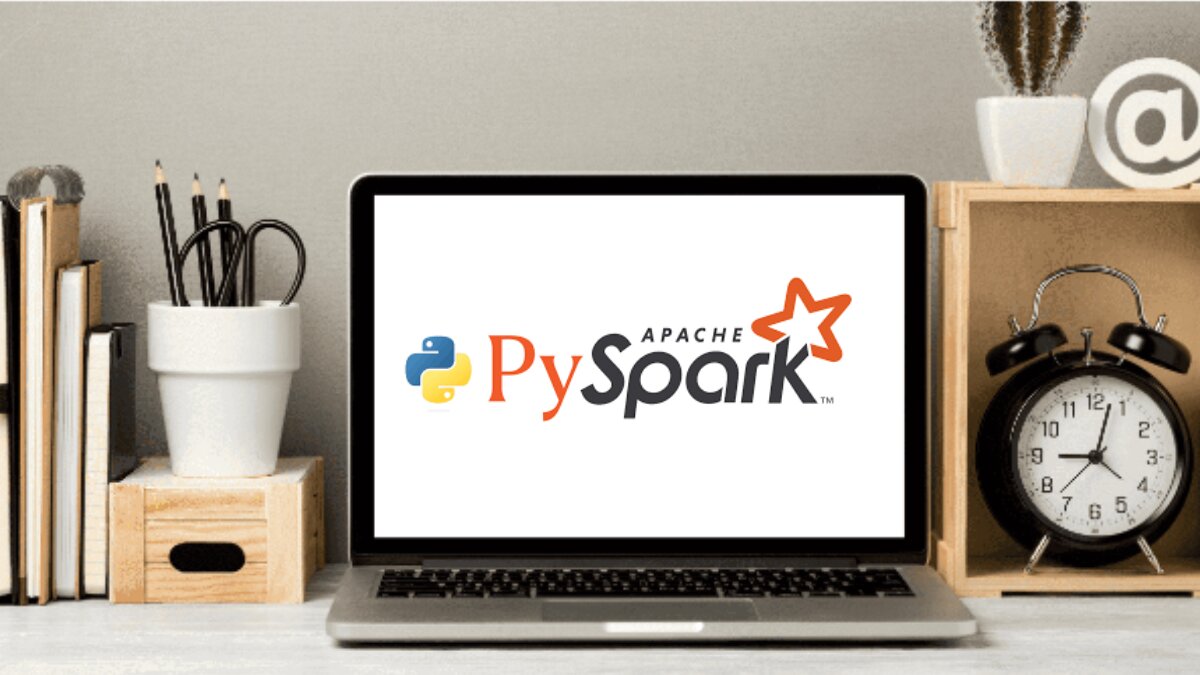PySpark vs Python: A Comprehensive Guide for Web Development
Summer Nguyen | 05-06-2024

In the cutting edge era, choosing the right technology is crucial for the success of a project . PySpark vs Python are two popular options to develop web.
PySpark is known for handling large datasets effectively. It is fit for huge projects. Meanwhile, Pythonic web development is versatile and easy to use. It is suitable for smaller projects, especially in data science.
In this post, we will discover the differences between PySpark and Python. Since it’s important for making the best choice for your project. Before exploring the differences of these to decide the most right tech, let’s make sure that you know the definite of those.
What is Pyspark?
PySpark is a game-changer for data analysis! It’s like having the easy-to-learn Python language supercharged with the power of Apache Spark. This means anyone who knows Python can now tackle massive datasets and uncover hidden insights, regardless of how big the data is.

PySpark doesn’t just write Spark programs in Python. It also gives you a super handy shell to dispose of your data directly. Analyzing massive data sets spread across multiple computers, but you can interact with it like it’s on your own machine.
Plus, PySpark allows you to take advantage of many features of Spark (from working with structured data (Spark SQL) to building machine learning models (MLlib). Here are some key feature that you should know about Pyspark:
- Real-time Computation: It focuses on in-memory processing in order to handle large amounts of data with low latency. This makes it suitable for real-time computations.
- Multi-Language Support: It is compatible with various programming languages. This includes Scala, Java, Python, and R. The flexibility makes it a preferred framework for processing massive datasets.
- Caching and Disk Persistence: It provides powerful caching mechanisms. This allows users to store intermediate results in memory for faster access. It also ensures good disk persistence, enabling efficient data retrieval even after system restarts.
- Swift Data Processing: PySpark achieves high data processing speeds:
- In-memory processing: Approximately 100 times faster than disk-based processing.
- Disk-based processing: About 10 times faster than traditional disk I/O.
- RDD (Resilient Distributed Datasets) Compatibility: It works well with RDDs, which are fundamental abstractions for distributed data processing. Python’s dynamic typing allows for easy interaction with RDDs.
What is Python?
Python is one of the most popular programming languages. It was developed and launched in 1991. It is free and open source. It’s free to use and download, including business projects.

It’s not only built for one task, but it also handles different things. That combined with its easy to learn. This is why it is so popular these days.
Here are some of Python’s significant characteristics:
- Readable Code: Because the syntax is clean and short, the code is simple to read and write.
- Versatile: It can be used for a variety of tasks like web development, data science, and scientific computing.
- Extensive Libraries: The applications use many different modules, so you don’t have to write code from scratch. Python libraries can also extend the application. This saves a lot of time because the code can be reused for other applications.
- Portable language: It is a cross-platform. Since code can run on Windows, macOS, and Linux without having modification.
- Easy to Learn: It is an ideal choice for beginners.
Pyspark-Benefits and Drawbacks
Benefits of Pyspark
There are some advantages in using Python programming. We’ll highlight the main benefits below, along with a quick explanation of why you should choose Python for each one.
- Speed: It leverages distributed processing to handle big data much faster than traditional Python.
- Scalability: It can scale to accommodate massive amounts of data without sacrificing performance.
- Variety of Data Sources: It is compatible with several kinds of data, including structured, semi-structured, and unstructured data.
- Machine Learning Integration: PySpark’s MLlib library provides tools for doing machine learning operations directly within the Spark framework.
Drawbacks of Pyspark
It is essential to acknowledge Pyspark’s drawbacks. Let’s explore some of the limitations and challenges associated with using Pyspark for building web:
- Performance Overhead: PySpark can have some overhead due to data serialization and distribution across machines. Scala, Spark’s native language, might be faster for highly performance-critical tasks.
- Resource Requirements: Running PySpark applications effectively often requires a cluster or machines with significant resources (CPU, memory).
- Limited Functionality Compared to Pandas: For smaller datasets, pandas (a popular Python data analysis library) might offer a simpler and more efficient approach for some tasks.
- User Interface Limitations: PySpark primarily focuses on programmatic data manipulation. It might lack the rich interactive features or visualizations found in other tools.
Python-Benefits and Drawbacks
Python has become one of the most popular tools in building web. Let’s examine both aspects to gain an overview of its strengths and weaknesses.

Benefits of Python
Python is a popular programming language because of the following advantages:
- Versatility: It is suitable for a variety of tasks. Python has libraries and tools to tackle diverse problems from web development and data science to scientific computing and automation.
- Extensive Libraries: The ecosystem includes a large number of collection of built-in libraries and third-party options.
- Cross-Platform Compatibility: This code can run on various operating systems like Windows, macOS, and Linux without modifications.
Drawbacks of Python
While Python offers many advantages, here are some drawbacks that you should consider:
- Speed: Compared to compiled languages like C++ or Java, Python can be slower due to its interpreted nature. This might be a disadvantage for performance-critical applications.
- Memory Management: It depends on automatic garbage collection. This approach can sometimes lead to higher memory usage compared to languages with manual memory management.
- Not Ideal for Mobile Development: Its limitations in performance and access to hardware features.
- Runtime Errors: Since it is dynamically typed, errors related to data type mismatches might not be caught until the program runs, potentially leading to unexpected behavior.
Key Difference between Pyspark and Python
While both PySpark and Python are valuable tools for building the web, they serve different purposes and have distinct strengths. You can refer to the following table to determine about which option is more appropriate:
| Difference | Pyspark | Python |
| Execution speed | faster | slower |
| Data analysis | faster | slower |
| Web development | Apt for handling extensive data sets and tasks related to machine learning. | It can be applied to a range of tasks, including machine learning, utilizing libraries like scikit-learn, TensorFlow, and Keras. |
| Cloud computing | It distributes computations across machine clusters. | It focuses on interacting with cloud services and automating infrastructure tasks. |
| Machine learning | It is suitable for processing large datasets and machine learning tasks. | It can be used for various tasks, including machine learning, with libraries such as scikit-learn, TensorFlow, and Keras. |
| Security | It provides key security features like: authentication, encryption, authorization, secure web UI. | It provides security libraries with built-in features such as hashing functions and cryptographic tools. |
| Cost | Pyspark has higher deployment costs | Python has lower deployment costs |
| Integration | It provides native integration with Spark | It is more flexible but requires installing third-party libraries |
| Scalability | It offers high scalability by leveraging the power of Spark | It has lower scalability |
This table summarizes Pyspark vs Python’s primary differences in their key features:execution speed, data analysis, web development,…. More details on these features are explained below in this post.
Execution speed

Python is created for versatile programming tasks, exhibits slower performance compared to PySpark.
On the contrary, PySpark is tailored for big data processing. It can handle large datasets more efficiently than Python.
Machine learning
When it comes to machine learning, Pyspark vs python have some differences:
PySpark acts as a bridge between Python and Spark. It leverages Spark’s power from within Python. It is a distributed computing framework that is suitable for processing large datasets and machine learning tasks.
On the other hand, Python is a language that can be used for many different things. It tackles a wide range of tasks, including machine learning without relying on external libraries.
Data analysis
Data analysis is paramount to the success and adoption of any framework. Let’s explore the data analysis aspects of Pyspark vs Python:
PySpark is typically favored over Python for data analysis. Because of its specialization in big data processing, which translates to enhanced speed and efficiency. Furthermore, PySpark boasts greater capabilities for tackling complex data analysis tasks.
Python continues to be a practical choice for data analysis. On account of its ease of learning when compared to PySpark. However, if you are seeking a powerful and efficient tool for data analysis, PySpark stands out as the superior choice.
Cloud computing
Cloud computing is a critical aspect to consider when choosing a framework for developing web. Let’s compare the Cloud computing characteristics of Pyspark vs Python:

PySpark excels in cloud computing by efficiently managing large datasets. It distributes computations across machine clusters, making it perfect for processing big data on cloud infrastructure.
On the flip side, Python’s cloud computing libraries and frameworks are engrossed in interacting with cloud services and automating infrastructure tasks. They have a vibrant community that provides resources and assistance.
Web development
PySpark efficiently handles large datasets through distributed processing. Integrates with frameworks like Flask to enhance its functionality for web tasks.
In contrast, Python’s clear syntax and vast learning resources make it beginner-friendly, backed by a supportive community. But its power goes beyond ease of use. A rich ecosystem of web frameworks like Django, Flask, and FastAPI allows you to build custom web applications for any need.
Security
When deciding framework for web development, security plays an integral role. Let’s evaluate and compare the security features of Pyspark vs Python.
PySpark inherited confidentiality from Spark. It offers complete data security through end-to-end encryption. It also supports authentication and authorization mechanisms.
In contrast, Python offers security libraries. It also has built-in security features like: hashing functions and cryptographic libraries. However, the security level is based on the usage and library.
So, Pyspark offers more comprehensive security features than Python. Python is more flexible but it requires knowledge of security libraries.
Cost
Cost is a significant factor in determining the adoption of any framework. Let’s delve into the data analysis aspects of Pyspark vs Python while considering their cost implications.
Pyspark is open-source and free to use. It requires a Spark cluster and manages more complex resources. However, it is highly efficient with its parallel data processing capability and faster processing speed. It’s fit for large projects with reducing processing and optimizing resource utilization.
Python is a programming language that is open-source and free. However, during software development, extra libraries or services may be required to increase the app’s functionality. Some of these libraries and services may require payment or have paid packages to use them.
Integration
PySpark is compatible with a range of platforms including Apache Kafka, Apache NiFi, and Apache Flume for the purpose of data intake. It can also be used in conjunction with Apache Hadoop for the storage of data across distributed systems.
Python provides integration through third-party libraries like PySpark and Pysparkling. It offers a plethora of libraries for various tasks and supports multiple machine learning frameworks.
Scalability
PySpark can be scaled to handle large datasets through a distributed computing model. It enables processing of data across multiple machines, boosting processing speed as the number of machines involved increases.
Python has the ability to scale. It operates on a single computer and processes data sequentially.
PySpark vs Python: Deciding the champion for your project
So, what is better for web development, Pyspark or Python? Below are use cases of them:

Use PySpark when:
- You want to process large-scale data.
- You want to conduct real-time data analysis.
- You want to do machine learning on a distributed computing platform.
- You are already acquainted with Python..
Use Python when:
- You want to prototype and develop rapidly.
- You want to work with beginners or a less technical team.
- You want to pay attention to data science and machine learning applications.
- You want to build web applications.
- You want to automate tasks.
Closing remarks
To sum up, PySpark vs Python are popular tech, each with its own pros and cons. When you’re dealing with massive datasets, PySpark is the heavyweight champion. But, for smaller projects or if you want to team Python up with other powerful tools, it’s still a great choice.
I hope this article has provided valuable insights into the advantages and drawbacks of each framework. It can serve as a reference to aid you in selecting the most suitable framework for your needs. Making the right choice will empower you to embark on website development with confidence.






![Top 20+ Must-have Shopify Apps for 2025 [Free & Paid] - Mageplaza](https://cdn2.mageplaza.com/media/blog/must-have-shopify-apps/top-must-have-shopify-apps.png)
![[2025 Updates] Top 10+ Upsell Apps for Shopify - Mageplaza](https://cdn2.mageplaza.com/media/blog/best-upsell-shopify-app/cover.png)